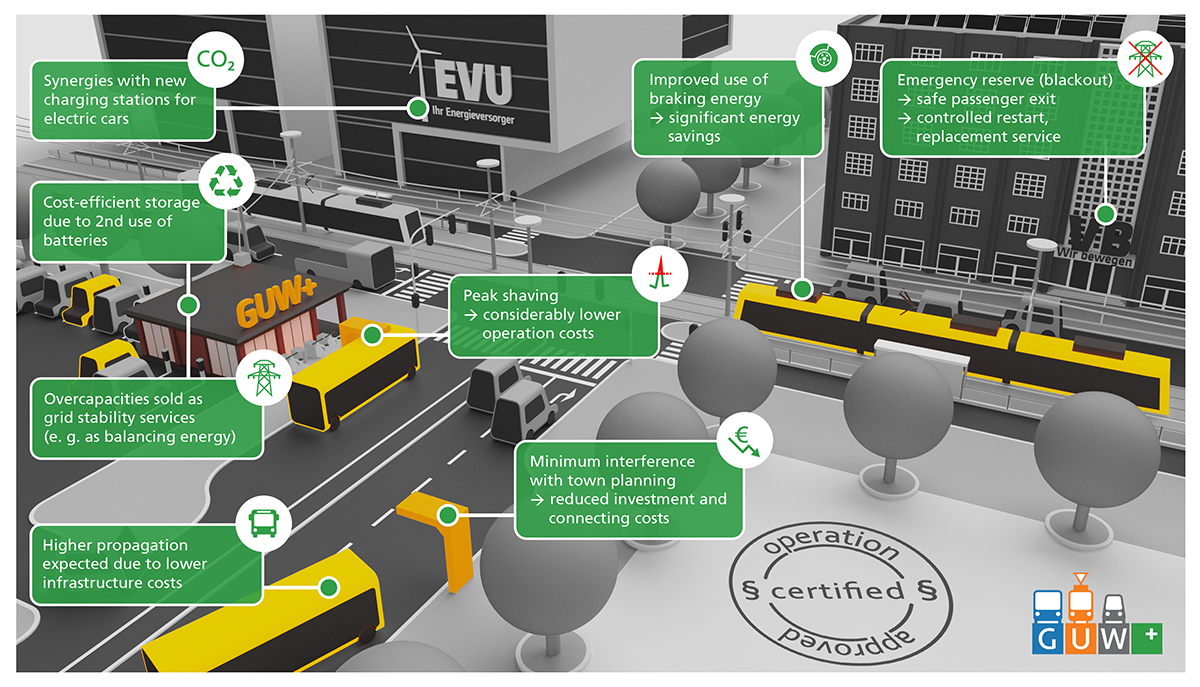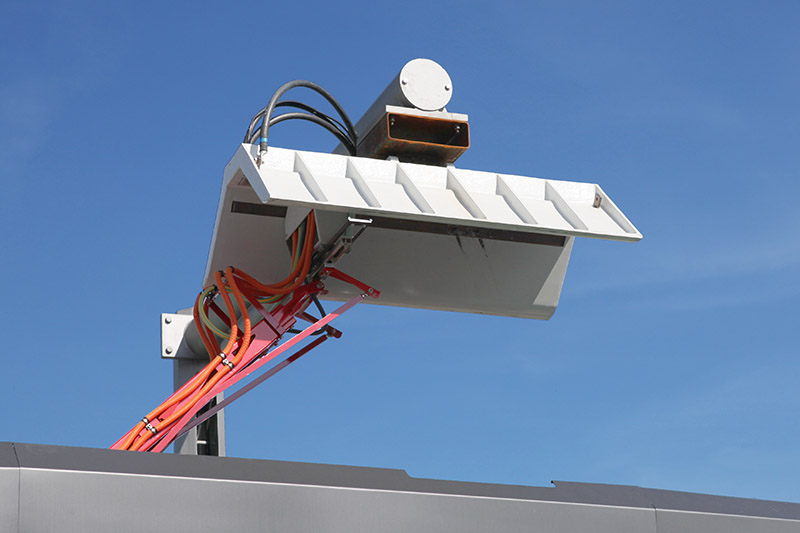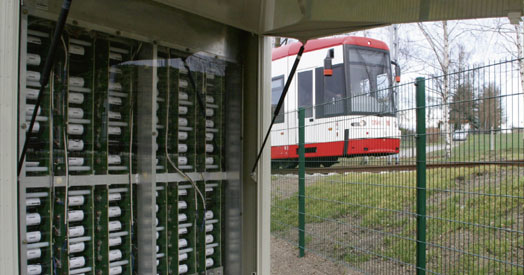GUW+ Energy Supply Concept
The controlable reversible DC substation GUW+ connects the existing infrastructure for the energy supply of light rails and trams with charging stations for electric buses.
In addition, a battery storage unit is installed in GUW+. This storage is used to avoid peak loads, temporarily store excess braking energy from trams or light rails and provide energy on demand.
With GUW+’s system configuration, grid stability services can be offered and blackout scenarios of the energy supply can be handled.


